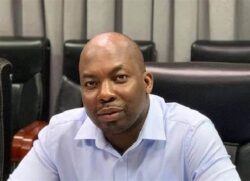Ghana, like many other nations, faces the challenging task of balancing macroeconomic targets with the imperative of fiscal consolidation. The recently announced 2024 macroeconomic targets provide a roadmap, featuring a delicate trade-off between stimulating economic growth and implementing measures for fiscal prudence. In this article, we explore the dynamics of this balancing act and delve into the potential implications for the Ghanaian economy.
The Macro Targets
The 2024 macroeconomic targets set ambitious goals for Ghana’s economic performance. These include an overall Real GDP growth of 2.8 percent, Non-Oil Real GDP growth of 2.1 percent, an End-December inflation rate of 15.0 percent, a Primary Balance surplus of 0.5 percent of GDP on a commitment basis, and Gross International Reserves covering not less than 1.7 months of imports.
Trade-off Between Growth and Fiscal Consolidation
The intricate dance between fostering economic growth and maintaining fiscal responsibility has become increasingly complex in the aftermath of the COVID-19 pandemic. Prior to the global health crisis, Ghana basked in the glow of robust economic expansion, boasting an average growth rate of 6.5%. However, the onset of the exit of the IMF in April 2019, excess borrowing, and mismanagement of the economy triggered a seismic shift, causing a precipitous decline to a mere 0.4% growth rate. The economic landscape, once flourishing, now faces the arduous task of reclaiming pre-pandemic levels.
As policymakers scrutinize the 2024 budget and projections extending to 2027, a deliberate and discernible emphasis on fiscal consolidation emerges. The targeted GDP growth rate of 2.8% signals a strategic commitment to balancing the imperative of growth with the necessity of fiscal discipline. This deliberate choice acknowledges the inherent tension between stimulating economic activity and ensuring financial prudence which the government has lacked in the past.
The deliberate focus on fiscal consolidation, while economically prudent, raises questions about the short-term sacrifices required. The coming years are poised to witness a compromise between the ambitious pursuit of growth and the stringent measures necessary for fiscal stability even with elections on the horizon. The delicate equilibrium sought by government reflects an acknowledgment that immediate growth may have to be tempered to ensure a sustainable and resilient economic foundation.
Exploring the Price of Stability
The overarching goal of restoring macroeconomic stability is undoubtedly crucial for the long-term health of Ghana’s economy. However, this pursuit comes at a palpable cost, particularly in the realm of immediate growth and socio-economic well-being. The growth projections outlined for 2024, tethered to fiscal consolidation objectives, may fall short in addressing the pressing issues of poverty alleviation and inequality reduction given the inflation induced over 850, 000 thousand Ghanaians into the poverty line according to the World Bank.
With a growth rate pegged at 2.8%, concerns are voiced regarding the potency of such figures in instilling hope and creating job opportunities. The spectre of economic hardship, exacerbated by the aftershocks of the excess Bank of Ghana financial involvement in government affairs leading to high inflation, more than 54%, looms large. The inherent tension between achieving stability and ensuring the well-being of the populace raises critical questions about the efficacy of the chosen path.
As the government navigates this delicate balance, the challenge lies in formulating policies that not only stabilize the macroeconomic environment but also resonate with the immediate needs of the citizens, especially food inflation, currently at 45%. Striking a harmonious chord between stability and tangible improvements in living standards remains a paramount challenge for the Ghana government.
Critiquing IMF-Inspired Growth Projections
Amidst the pursuit of stability and growth, scepticism emerges regarding the adequacy of IMF-inspired growth projections for 2026. Critics argue that the projections may fall short of addressing the multifaceted challenges confronting Ghana’s economy. Acknowledging the limitations of the IMF-supported program becomes imperative in this discourse.
While the program provides a framework for financial assistance and structural reforms, it is not a panacea for all economic woes. The call for additional growth-enhancing measures beyond the confines of the IMF program underscores the need for a comprehensive and locally tailored approach to economic challenges. The recognition that a one-size-fits-all solution is inadequate prompts a re-evaluation of strategies and a search for nuanced, context-specific interventions.
Conclusion
The 2024 macroeconomic targets set the stage for Ghana’s economic trajectory, emphasizing the challenge of balancing growth aspirations with fiscal prudence. As the government seeks to restore macroeconomic stability, the critical question remains: at what cost to immediate growth and the well-being of the populace? The answers may lie in a holistic and forward-looking approach that goes beyond the confines of current projections and recognizes the diverse economic realities across the nation.










